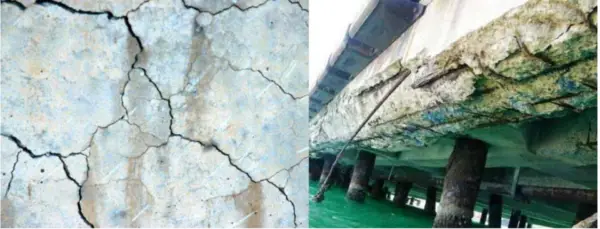The soundness test is a critical standard test performed on both fine and coarse aggregates to determine their resistance to disintegration when exposed to weathering action.
This test, also called the sulfate soundness test, aims to simulate the effects of repeated wetting and drying as well as freezing and thawing cycles that aggregates undergo after being incorporated into asphalt or concrete.
The most common methods for soundness testing are ASTM C88 and AASHTO T 103, which involve subjecting a sample of aggregate to five cycles of immersion in a saturated solution of sodium sulfate or magnesium sulfate.
The soundness test of fine aggregate and coarse aggregate are two essential tests conducted to determine the suitability of aggregates for use in concrete mixtures. These tests involve immersing the aggregates in a sodium sulfate or magnesium sulfate solution, which simulates the effects of weathering.
The aggregates are then dried, and the process is repeated for several cycles. The percentage of weight loss during this process is recorded, and the soundness test of aggregate results are compared to standard specifications to determine the acceptability of the material.
Soundness Test of Aggregate based on US Codes
- As per ASTM C88 and AASHTO T104 standards, a sample of coarse or fine aggregate is immersed in a solution of sodium sulfate or magnesium sulfate for 16-18 hours.
- It is then removed, allowed to drain for 15 minutes and oven-dried. This constitutes one cycle.
- The process is repeated for the specified number of cycles, usually five.
- After the final cycle, the aggregate sample is washed, oven-dried and sieved. The sieves used depend on the aggregate sizes. The material passed through the sieves determines the percentage loss which indicates the soundness.
- Maximum allowable loss values range from 10-20% for five cycles. Coarse aggregates and fine aggregates need to meet the minimum soundness requirements as per codes to be used in concrete or asphalt.
An excessively high loss percentage means the aggregates are not durable enough for construction application. However, soundness test results alone should not lead to outright rejection of an aggregate source.
Significance of Soundness Test
The soundness test effectively simulates weathering action like freezing-thawing and wetting-drying that aggregates undergo at job sites.
Durability against such conditions ensures long-lasting performance of concrete and asphalt mixes without premature failure. Thus, the simplicity and low cost of the soundness test makes it a popular first-level quality check for aggregates.
After five of these wetting and drying cycles, the aggregate sample is tested by sieving to determine the amount that has disintegrated into smaller sizes.
The less the disintegration, the more sound or durable the aggregate is considered against weathering action. Both coarse and fine aggregates need to pass minimum requirements for durability set by ASTM and AASHTO standards.
Soundness Test – IS 2386 Part V
Soundness is defined as the resistance of the aggregates to excessive changes in volume caused due to weathering action.
- This test is conducted to determine the durability of the aggregates.
- This test is conducted to evaluate whether the aggregate has the ability to degrade or disintegrate when subjected to variation in temperature and freeze-thaw cycles.
- The specifications for this test are given in IS : 2386 Part V 1963 Soundness.

Procedure
- A sample of coarse aggregate is taken to conduct the test and the particles finer than 4.75 mm size are removed ; the size of sample for different sizes are noted.
- The samples are washed thoroughly and oven -dried which are separated into different sizes.
- The sample is immersed in the prepared solution of sodium sulphate or magnesium sulphate for 16 to 18 hours.
- The sample is removed from the solution and drained and oven- dried to a constant weight.
- The sample is allowed to cool at room temperature.
- Immersion and drying procedures are repeated for many cycles and after the completion of the final cycle, the cooled sample is washed with barium chloride to free from above solutions.
- Each sample is dried to constant weight and weighed.

Note
The average loss of weight for 10 cycles should not exceed 12% for sodium sulphate and 18% for magnesium sulphate solutions.
Another test is the sieve analysis test on aggregates. You can get the complete information and how useful it is.
Conclusion
By conducting the soundness test of aggregates, civil engineers can ensure that the materials used in concrete construction are of high quality and can withstand the test of time.
This, in turn, leads to the creation of durable and long-lasting structures that are resistant to environmental factors.
Understanding the importance of the soundness test of aggregates is essential for anyone involved in civil engineering projects, as it directly impacts the safety, reliability, and longevity of the built environment.





